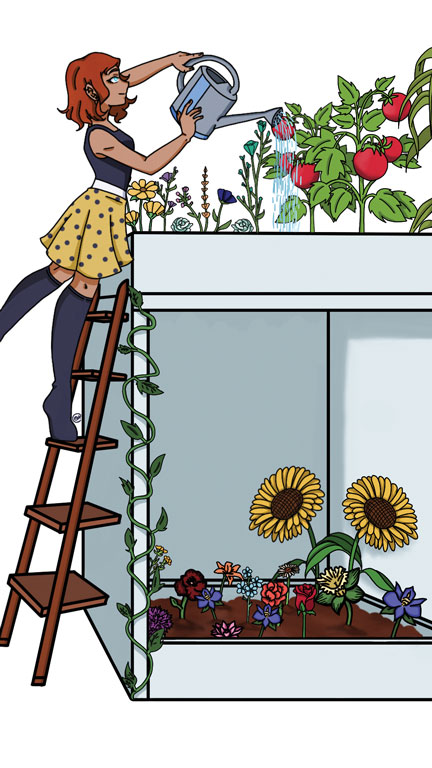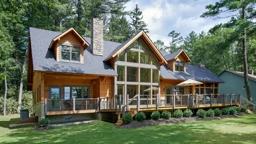
Illustration by Cassidy Peak.
Whether you have only a small area for planting, you’re not sure about the health of your property’s soil or you simply don’t want to break your back or bruise your knees, raised beds can be the answer to many a casual gardener’s prayer. Not only do you have the convenience of being able to set up multiple beds, they’re a boon for controlling gardening conditions. You can prevent soil compaction, provide pest control, increase drainage and cut down on weeding.
Here are five tips to keep in mind:
Choose durable material.
When creating a raised bed, durability is key. Popular options include cedar, cinder blocks, stones or corrugated metal. Gardeners who want a less-permanent raised bed may choose straw bales or felled logs, but if you want it to last for more than a year, go for more rugged choices. Avoid treated wood, car tires or other “upcycled” materials, as these may have chemicals that can leach into the soil and damage your plants.
Add drainage first.
Most plants won’t do well if their roots sit in water, so adequate drainage is vital to success. If your raised bed has a bottom, you’ll need to drill holes, but an easier method may be to put the raised bed directly on the ground. Either way, add a 2-inch-thick layer of gravel to the base before adding soil so that water will filter through, preventing root rot.
Use quality soil.
If you have healthy soil from your yard, by all means use that, but it’s often easiest to buy enough soil to fill the bed. Then, add compost or mulch on top. The roots from the plants will help “mix” the soil and compost, creating a nutrient-rich food source for your delicate sprouts.
Add critter control.
Depending on where you live, you may need to add some type of fencing around the raised bed to keep deer, chipmunks, raccoons and other bandits out of your beds. If fencing isn’t feasible, mesh netting across the top of the plantings will also prevent animals from noshing on your crops before you can.
Choose warmth-loving plants.
Soil in a raised bed will warm up more quickly than the ground dirt, which means you can plant earlier in the season than you would in a regular garden. Any plant that thrives in warmer soil is a good choice, including lettuce, tomatoes, beans, kale, Swiss chard, peppers, cucumbers, strawberries, squash and many others. Herbs do very well in raised beds since the conditions are consistent.
Most plants require at least some measure of full sun during the day, so be sure to select a spot that receives natural light. Also ensure that raised beds can be watered easily, such as placing them within reach of a hose. That’s also beneficial if you’d like to use drip tape or sprinklers for automatic watering. Because they have better drainage, raised beds tend to dry out faster than an in-ground garden, so if you’re not getting enough rain, frequent watering will be crucial.
Follow these easy guidelines and come spring, you’ll be enjoying the fruits (and veggies) of your labors.











